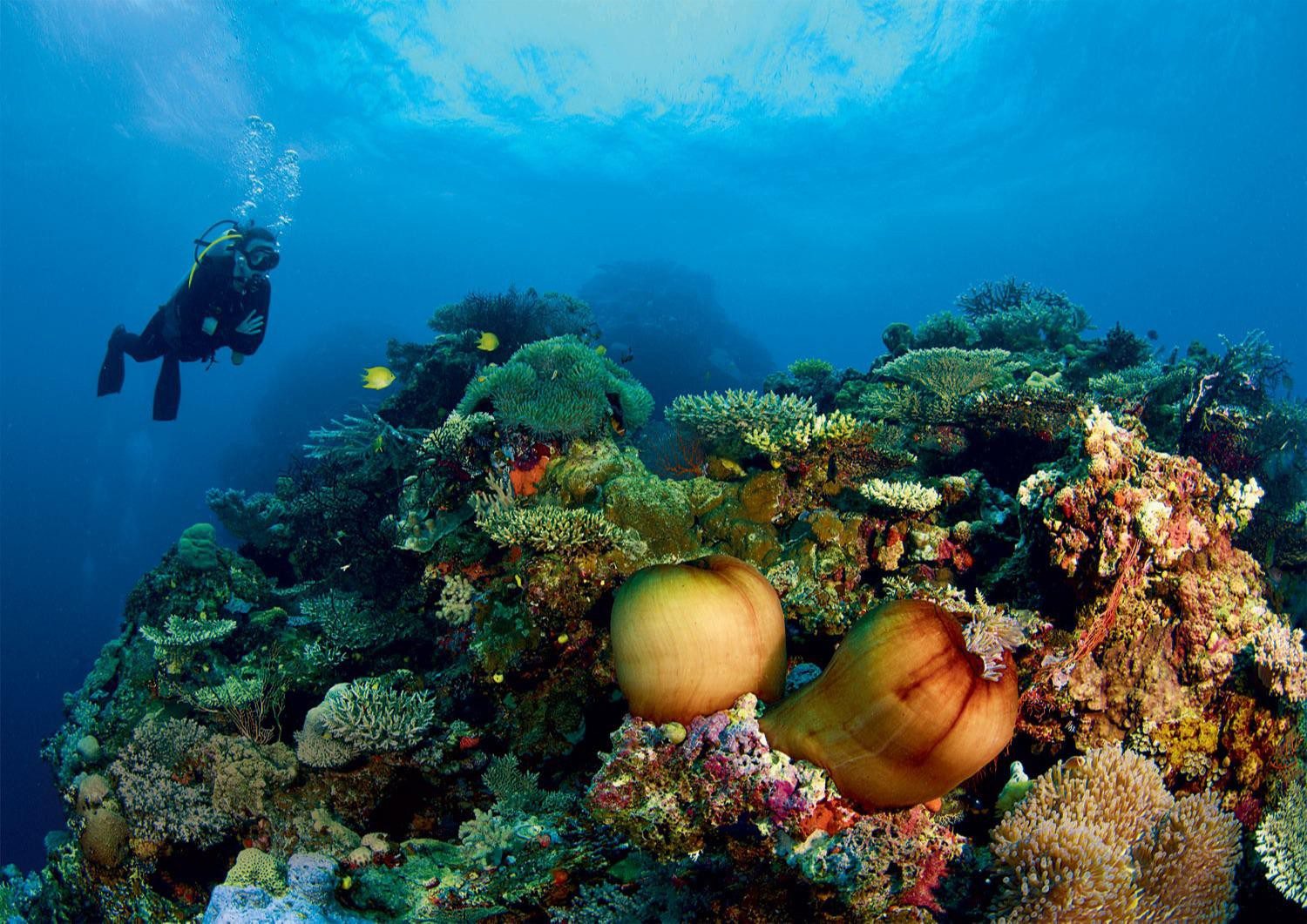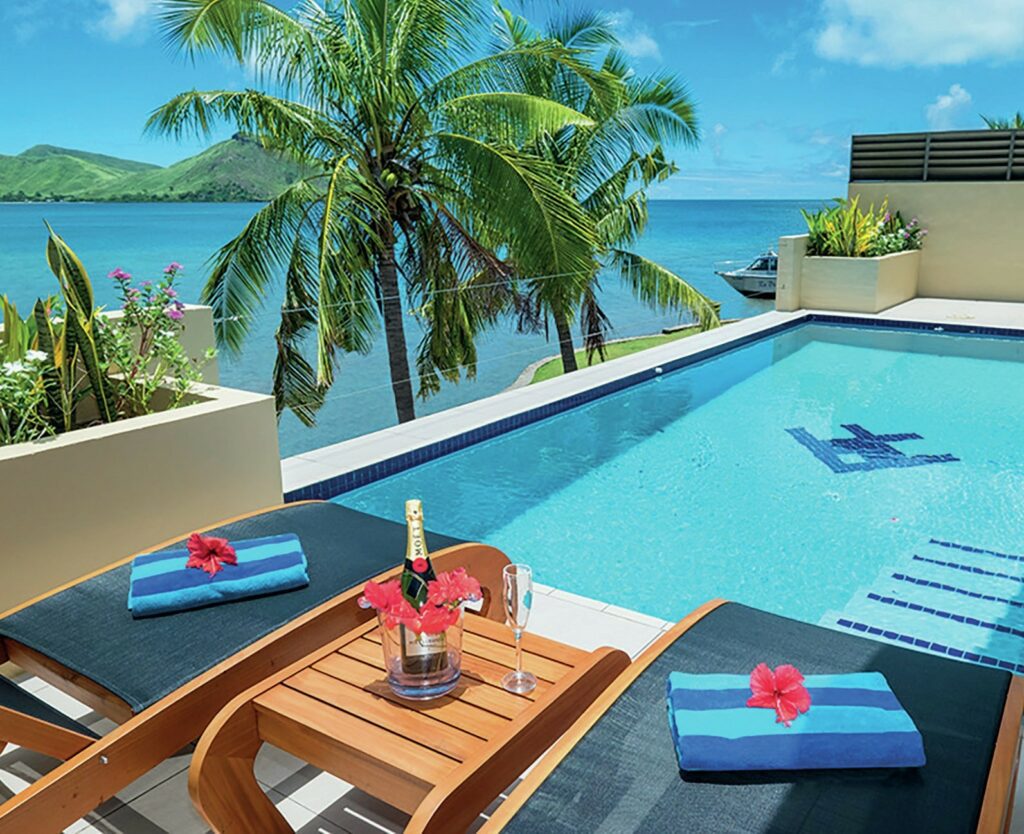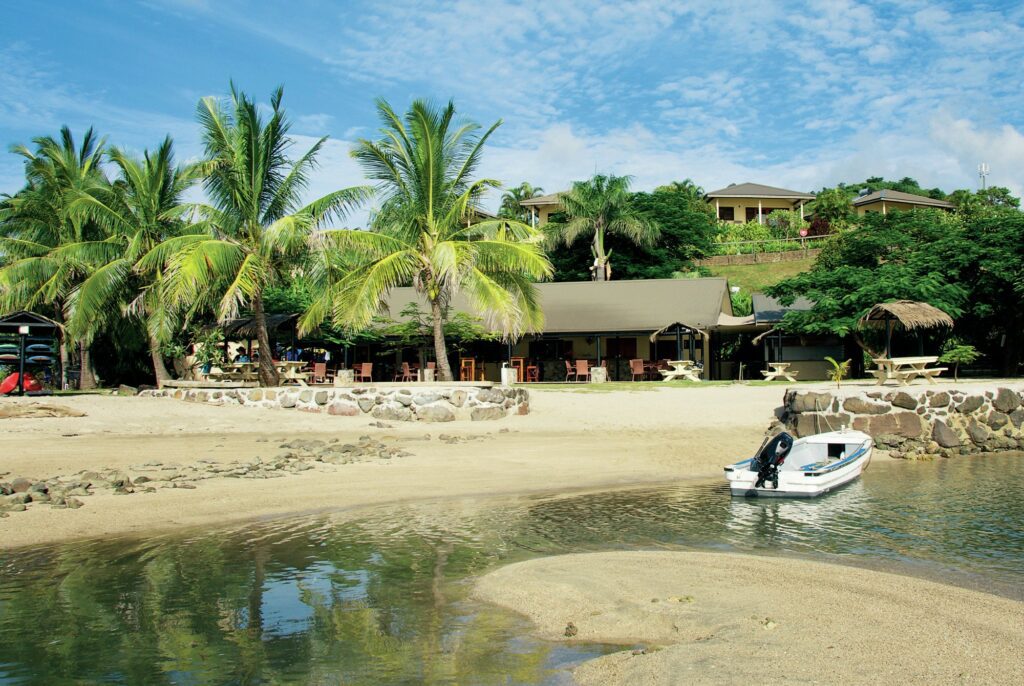Did you know?
These days around 40% of the Fijian population are of Indian descent. Fiji was colonised by the British between 1874 and 1970. Between 1879 and 1916 they gave 600,000 Indians free passage to Fiji in exchange for work on the sugarcane plantations.
Fiji Reopens its Borders to Tourism
On 1 December 2021, Fiji reopened its borders to foreign travelers after being closed for almost two years. Fiji was one of the first countries in the Asia Pacific region to welcome back tourists, an essential part of the economy. Before the pandemic, tourism represented 40% of Fijis GDP, and over 35% of the country’s people were employed in the tourism industry.
The Diverse Diving Opportunities in Fiji
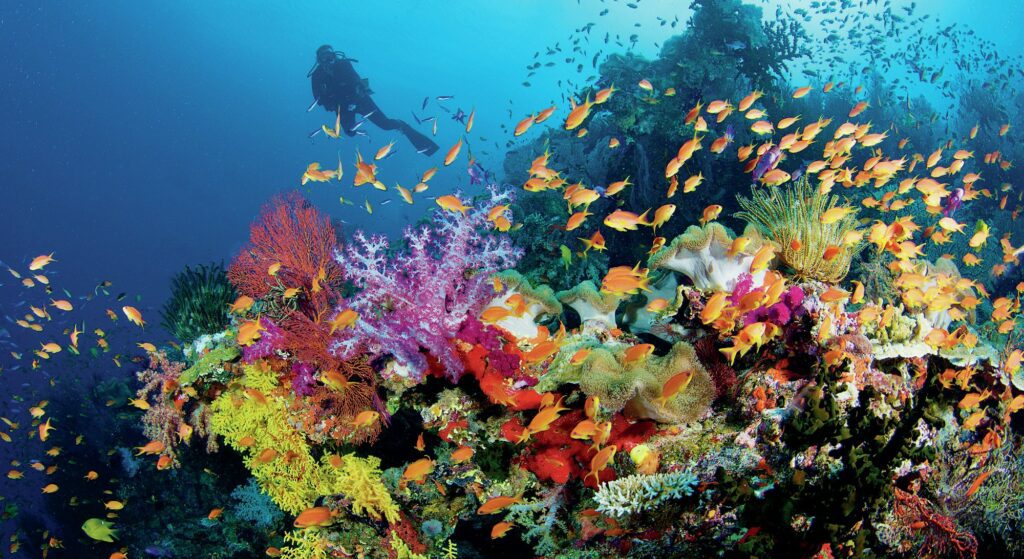
Fiji comprises over 330 islands and offers a huge variety of diving. It also lays claim to being the ‘soft coral capital of the world’. Many tourists who visit this tiny Pacific nation are divers, drawn here by the warm waters, stunning corals, and abundant marine life. So, when the opportunity arose to dive the legendary Bligh Waters, whose reefs are regarded as having the best soft corals in Fiji, I was intrigued to discover if the reality lived up to the hype. The Bligh Waters, named after Lieutenant William Bligh of Mutiny on the Bounty fame, refer to the channel between Fiji’s two largest islands, Viti Levu and Vanua Levu. Vast amounts of water move through this channel, bringing a wealth of nutrients up from the deep, sustaining a thriving ecosystem and rampant coral growth.
Discovering the Volivoli Beach Resort
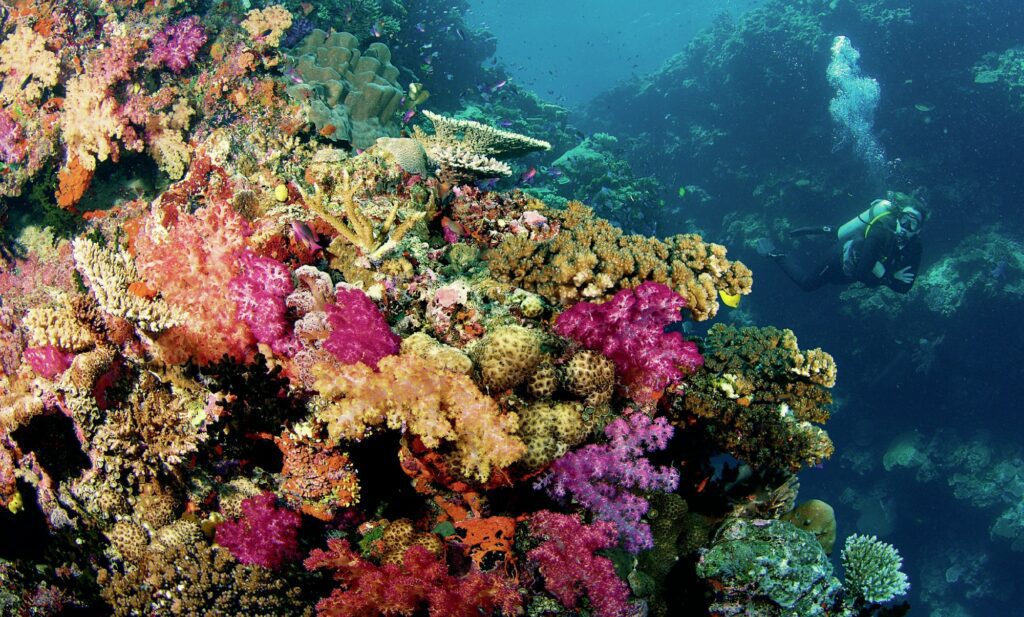
One of the best places to explore the Bligh Waters is from Volivoli Beach Resort, about a two-and-a-half-hour drive from Nadi airport. Located on a headland at the northern tip of Viti Levu and built with divers in mind, this sprawling family-run resort occupies a lush hill covered in wellmanicured tropical gardens. All of the 33 rooms and villas have spectacular ocean views, and four of the villas even boast a private pool. Plus, there is a first-class restaurant, a massive pool with a swim-up bar, and a beach bar and restaurant next to the dive centre. The dive centre itself is outstanding; for me, as a photographer, the highlight is a 14-person camera room complete with individual charging stations and air guns. The compressor room is spotless, and the dive center is well laid out and well maintained.
Ra Divers: Exploring the Dive Sites of Volivoli
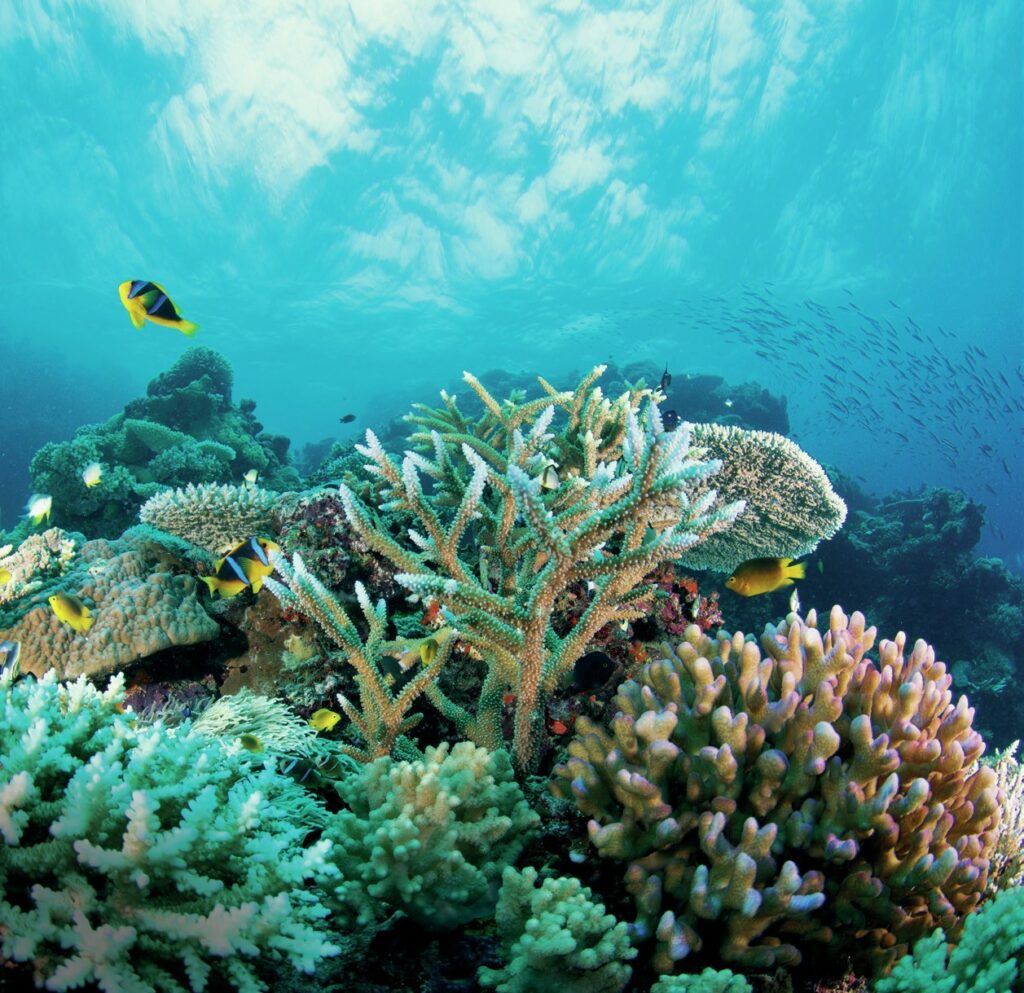
Volivoli, or Ra Divers as the dive operation is known, have five boats in total, and there are nine different regions with a choice of over 80 dive sites. Closest to the resort are the Volivoli House Reefs; these shore dives directly in front of the dive center are very convenient and offer excellent muck diving. Seahorses, nudibranchs, octopi, scorpionfish, sea pens and much more can be found here.
Nananu I Ra Island and Nearby Wrecks
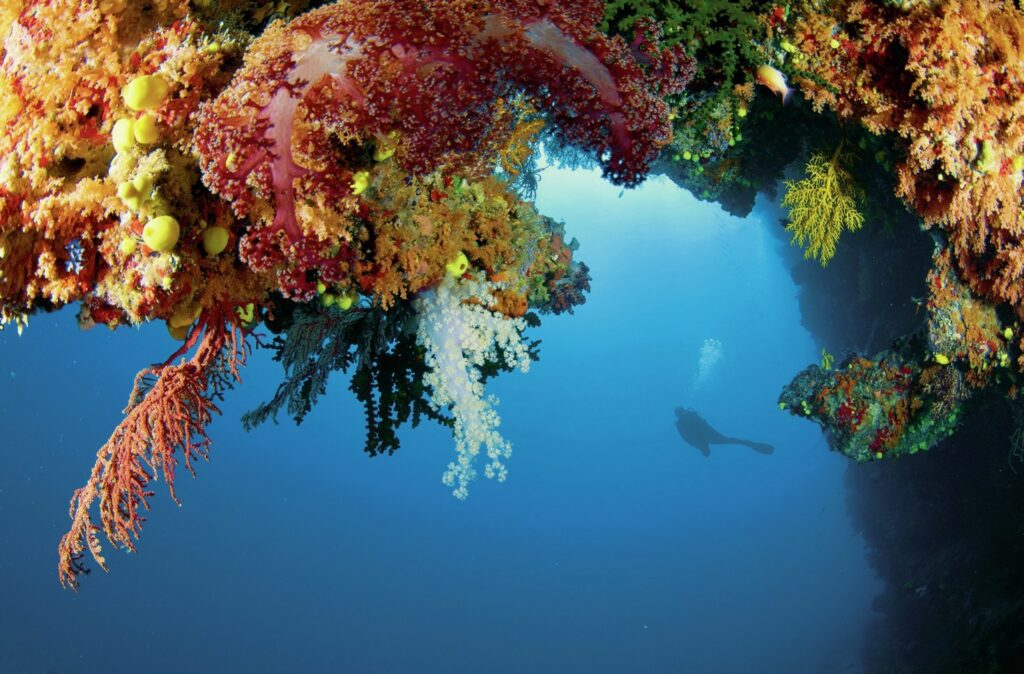
A short five- to ten-minute boat ride away is the small island of Nananu I Ra; this sheltered location is excellent for courses and beginner divers with its shallow reefs, gentle sloping walls and coral bommies covered in soft corals. The island is also the location of the Papuan Explorer, one of two wrecks in the area. The other wreck, the MV Ovalau II, is located at Vatulaca Reef, also only a ten-minute boat ride from the resort. This reef is a maze of tunnels, swimthroughs, and passageways adorned with soft and hard corals. The reef is teeming with fish, and both gray and whitetip reef sharks are often spotted here. Cakau Kabola is a 20-minute journey by boat, and this relatively new area to Ra Divers is an excellent all-weather option. Great for drift dives with walls plastered with both soft and hard corals.
A little further away, about 25 minutes from Volivoli, is Malake Passage. The reef here is home to a resident pod of spinner dolphins.
Did you know?
One of the most-iconic beverages from Fiji is referred to as Kava and not only is it a traditional drink but it is the country’s national drink. The major ingredient in the making of Kava is the ground root of a plant that belongs to the pepper family.
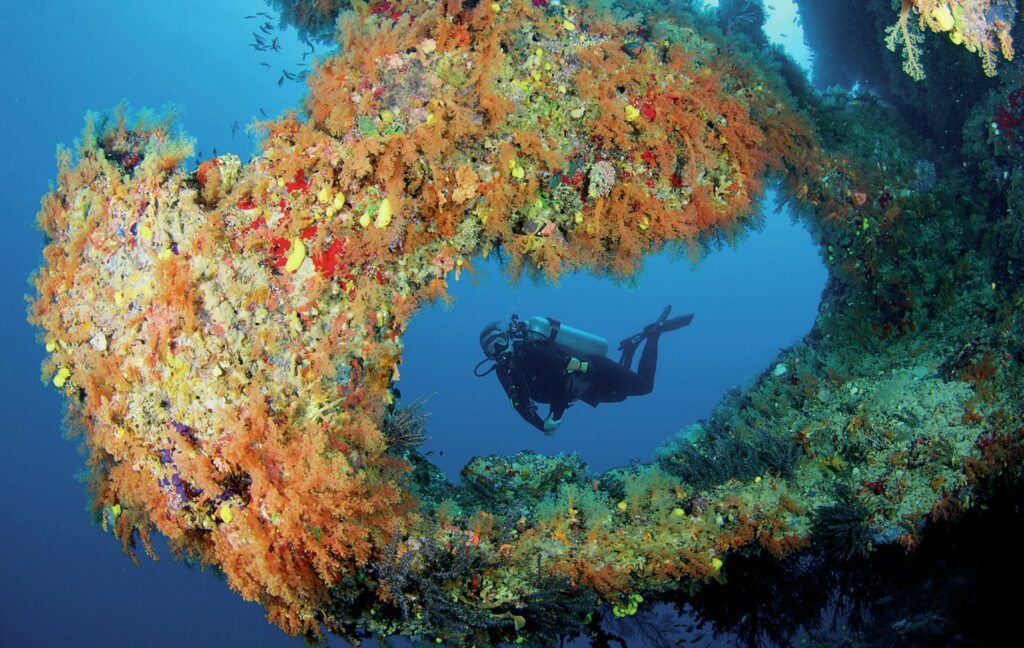
The towering hard coral pinnacles and reef structure make this an excellent place for diving and snorkeling.
A few minutes away from Malake Passage is Charydbis Reef; this horseshoe-shaped reef has a topography of sloping soft coral walls, home to various reef fish, scorpionfish and lionfish. This is also a great place to see pelagics like eagle rays and sharks.
In the opposite direction, about a 45-to-50-minute boat ride from the resort, is the Vatu I Ra marine reserve, the largest reserve in Fiji. This marine reserve encompasses the Vatu I Ra Island, its surrounding barrier reefs and the deep channel that runs through them, the Vatu I Ra Passage. This marine protected zone is prone to strong currents, and its reefs are covered in soft corals and teeming with life.
Just outside the marine reserve is the Nukurauvula Passage. This reef is more sheltered and home to impressive coral formations and plenty of sharks.
Midway Reef is about halfway between the resort and the marine reserve; this area is excellent for its variety of marine life, pristine hard coral gardens, and superb sea fans.
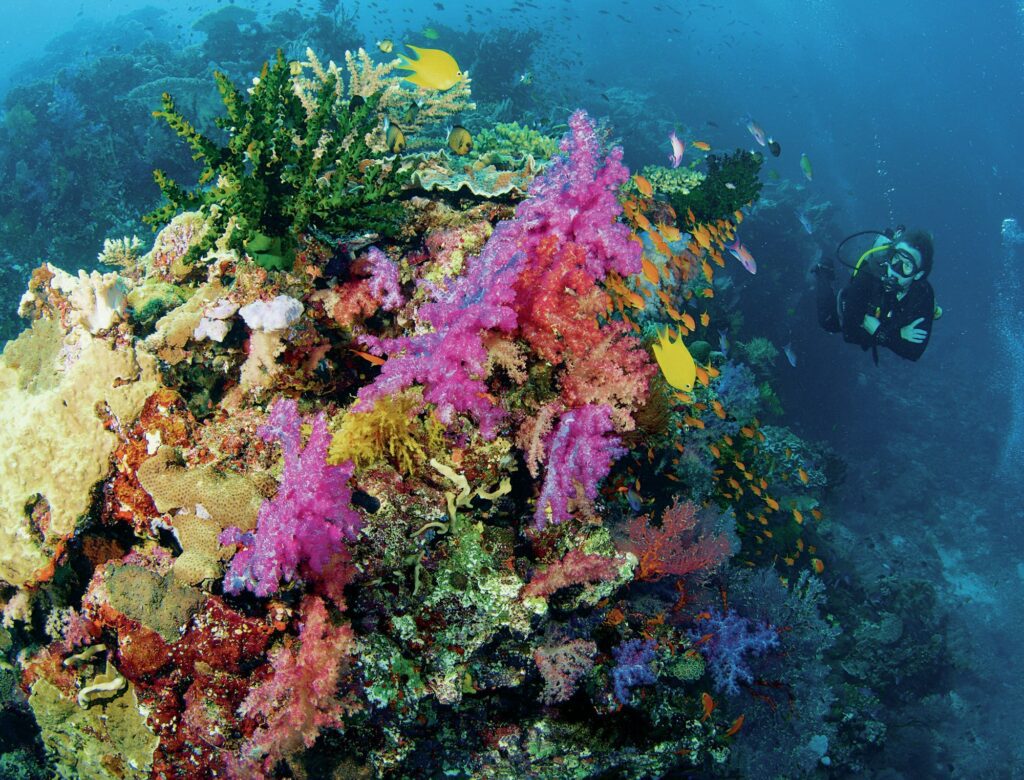
Diving During Cyclone Season
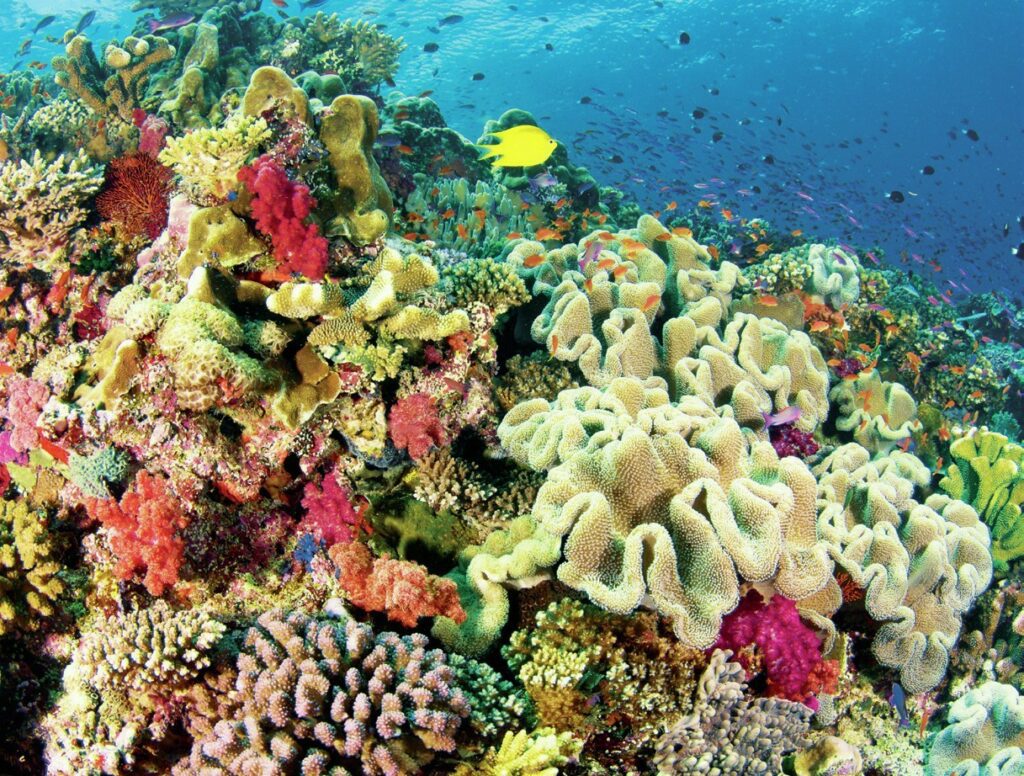
We were visiting Fiji towards the end of the cyclone season. On our first day of diving, the skies were heavy with dark gray clouds that sat menacingly on the surrounding mountain tops, and strong southerly winds rendered most of the sites undiveable. Fortunately, the Nukurauvula Passage was sheltered enough to make diving possible, and although the 30-minute journey there and back was not the smoothest, the diving was terrific. The reef consists mainly of hard corals but a generous smattering of sea fans and soft corals. The first dive site consisted of several substantial pinnacles covered in corals and home to several anemones and resident clownfish. As we weaved among the pinnacles, whitetip and blacktip reef sharks were ever-present. Our second dive was along a wall which turned into a steep slope at about 80ft. Again, the hard coral was in excellent condition, and more curious blacktip reef sharks joined us. Our eagled-eyed dive guide even found a large stonefish perched on top of the reef.
Vatu I Ra Marine Park: Soft Coral Capital of the World
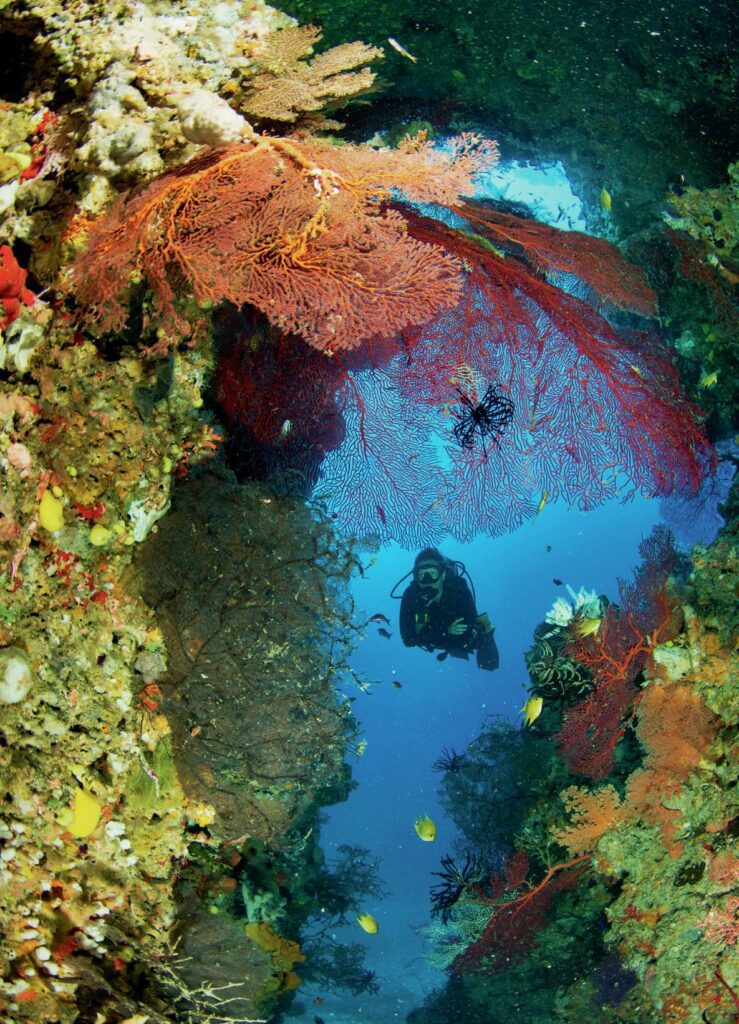
The following day the skies cleared, and the wind dropped off, so we headed out to the Vatu I Ra marine park. The first day of diving had been excellent, and although there had been a reasonable amount of soft coral, there was not really enough to convince me that Fiji deserves the title of ‘soft coral capital of the world’. The Marine Park was about to change this opinion emphatically. At a dive site called Instant Replay, we descend onto a sloping reef littered with coral bommies. As we drifted along the site, each bommie was more extravagantly decorated in vivid soft corals, like an underwater version of the Rio Carnival; each bommie appeared to try and outdo the other with its outlandish display. However, all the stunning bommies were building up towards the breathtaking finale. At the end of the dive was a wall covered in a luxurious carpet of yellow soft corals, which was simply spectacular. We had arrived at the ‘soft coral capital of the world’.
The second dive at Mellow Yellow was equally impressive. This considerable coral pinnacle is covered in the jacket of yellow soft corals with a similarly impressive hat of hard corals at its summit. Like on the first dive, the reef pulsed with thousands of anthias, and where the current hit the reef, large schools of fusiliers avoided the attention of wahoo, sharks and trevallies. These reefs are best dived with some current. The fish are much more active, the predators are a lot more interested, and most importantly, the soft corals are out in all of their glory.
On another trip to the marine park, we explored two more stunning sites, Potluck and Purple Haze. Potluck was a patchwork of color and bustling activity. As the name suggests, the soft corals that adorned the jagged walls of Purple Haze were predominately purple. As usual, the reef was alive with anthias and various reef fish, plus gray reef sharks, wahoo and jacks.
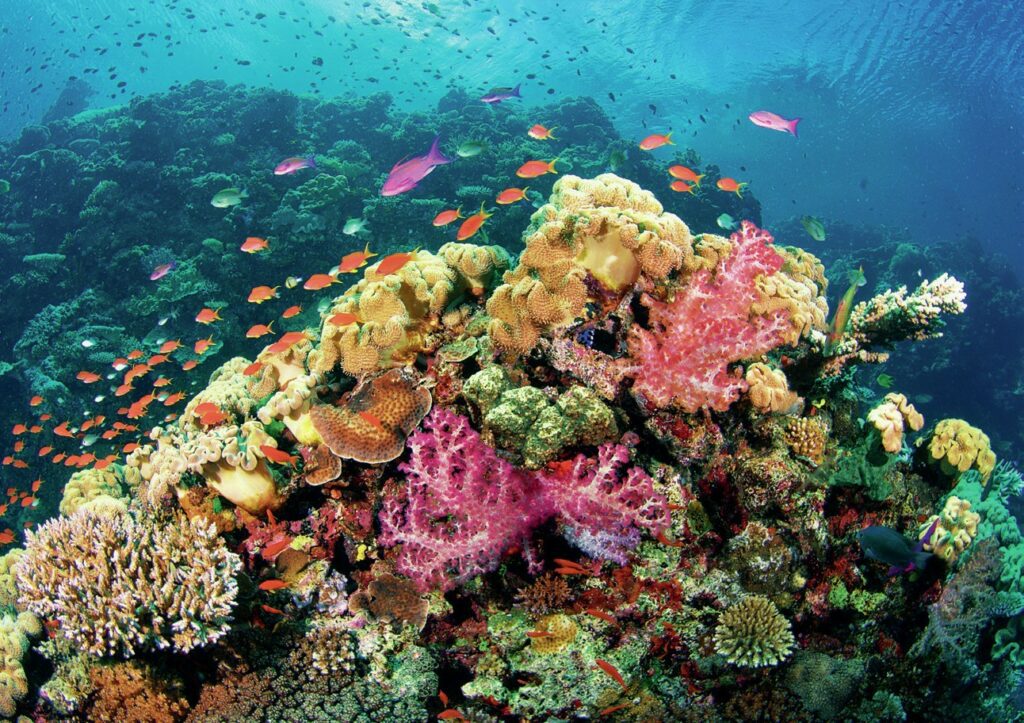
Exploring Other Dive Sites and Reefs
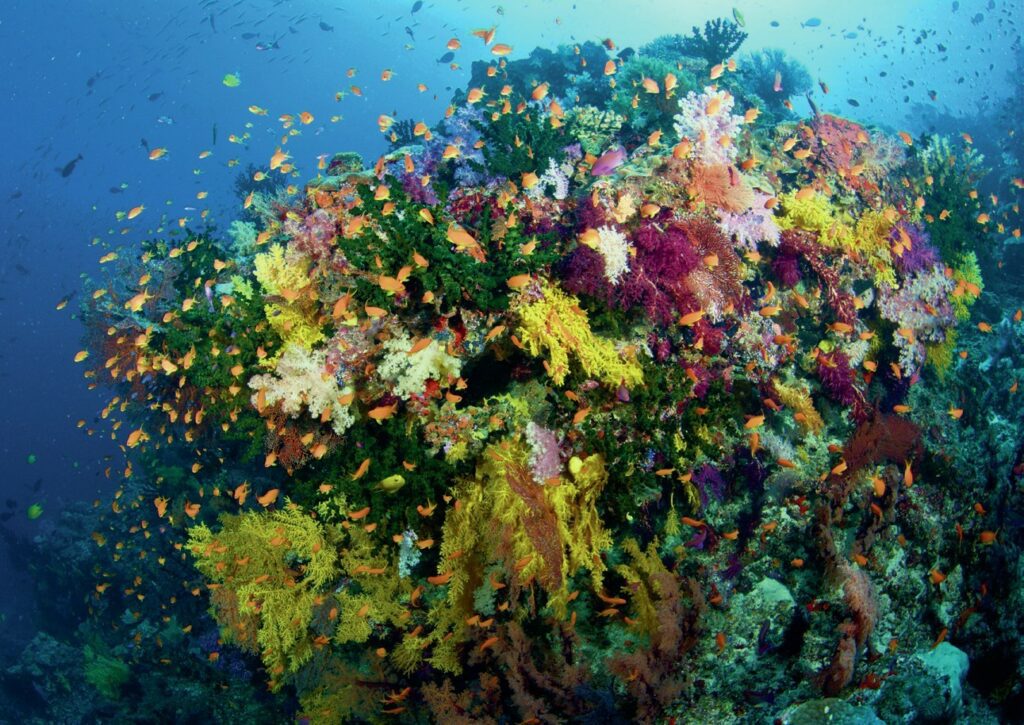
During our visit, we also explored Midway Reef. This is another of the many dive locations outside the marine park, and the hard corals here were magnificent. Heart Break Ridge was particularly impressive. This vast reef starts at around 32ft and drops to approximately 80ft. Towards the end of the reef are two large swim-throughs/caves which sprout a forest of sea fans. The top of the ridge is covered in hard corals and trevallies and wahoo constantly harried simmering wall of baitfish. At one end of the ridge, a small pinnacle conveniently rose to around 16ft from the surface, offering an excellent place for a safety stop while still exploring the reef.
Activities for Non-Divers and Off-Gassing Days
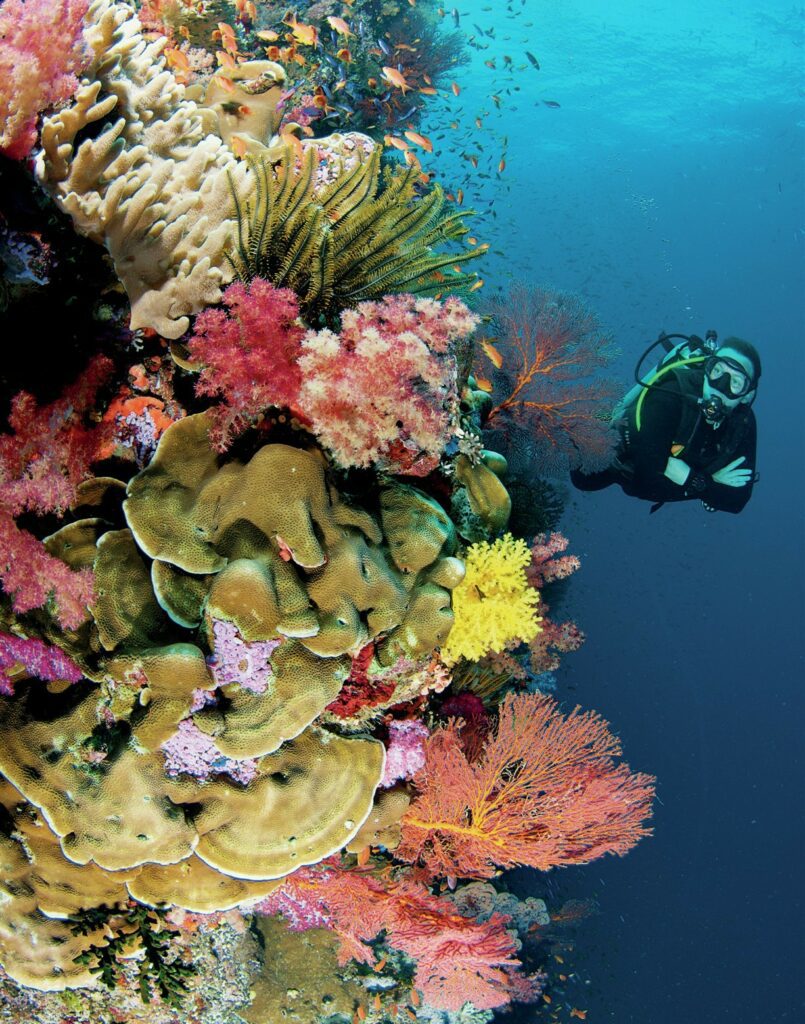
There is also plenty to do and see for non-divers or divers who want to explore the island and off-gas. Paddleboards and kayaks are available, and the mangroves that fringe some of the resort are a great place to snorkel. On one of our non-diving days I went on the dolphin-watching trip out to Malake Passage. Soon after arriving at the reef, the boat was surrounded by a large pod of spinner dolphins that subsequently frolicked with the boat for at least half an hour. Once they had tired of us, we went for a snorkel. The tops of the reef are only about 10ft from the surface and covered in hard corals and anemones; we even saw a couple of whitetip reefs sharks down in the depths.
Did you know?
Fiji’s territory is comprised of 332 islands. Apart from the large number of islands, Fiji also has at least 500 islets, with most owing their formation to volcanic activity which began in the approximate region of 150,000,000 years ago.
For an almost completely dry day, we visited the Nabalasere waterfall, which is the tallest in Fiji. After about an hour and a half drive, we arrived at a village nestled in a rainforest-covered mountain. After the custom of asking one of the village elders for permission to visit the waterfall, we set off on a 30-minute hike to our destination, joined by half the village. The Fijians are incredibly friendly and were genuinely interested in chatting to us for the entire trip; they also insisted on carrying our bags, and even my youngest son when he claimed he could not walk any further. The waterfall itself is stunning, and after getting drenched under these mighty falls, we spent some time swimming in some of the nearby plunge pools. This was a great day out and an enjoyable cultural experience.
Conclusion: Bligh Waters and Volivoli Beach Resort Experience
Our stay with Volivoli was exceptional. The fact that the resort is on the mainland and there is no need to catch connecting flight to another island is a real bonus. In addition, the food was excellent, the resort staff were extremely friendly and could not do enough to help. The dive staff were also fun, professional and passionate about diving, and due to the remote location, we were always the only boat on the dive site.
The soft corals in Fiji and, in particular, the Bligh Waters are phenomenal, and it is easy to see why this is called the ‘soft coral capital of the world’, but what surprised me was the health of the reefs in general and not just the ones in the Marine Reserve. The hard corals at the dive sites we visited were just as impressive as the soft corals. Far from being a one-trick pony, the Bligh Waters offers a huge variety of diving on pristine reefs. With vastly differing topographies and marine animal encounters. Soft coral capital of the world, sure! But also, so much more!
Photographs by Adrian Stacey and Volivoli Beach Resort
This article was originally published in Scuba Diver North America US #11.
Subscribe digitally and read more great stories like this from anywhere in the world in a mobile-friendly format. Link to the article
